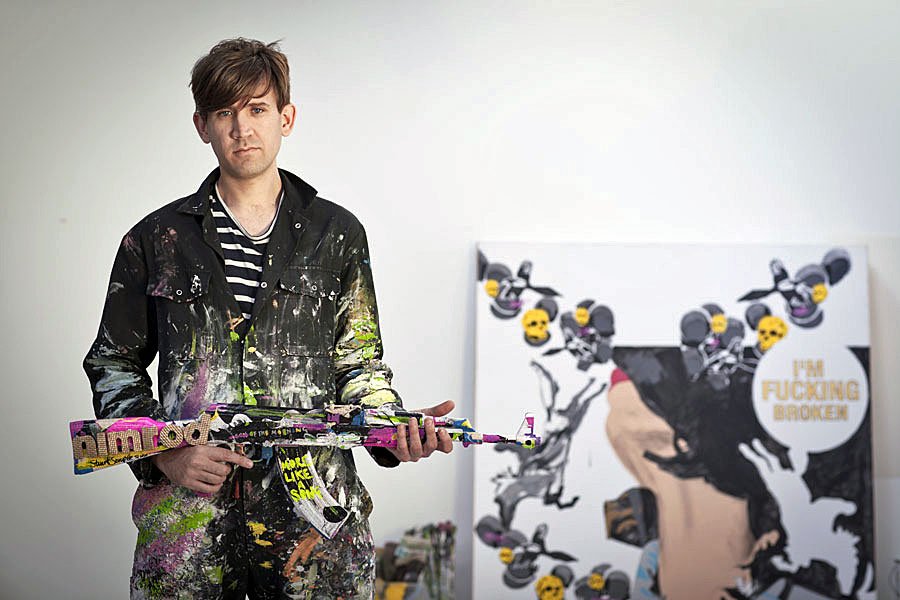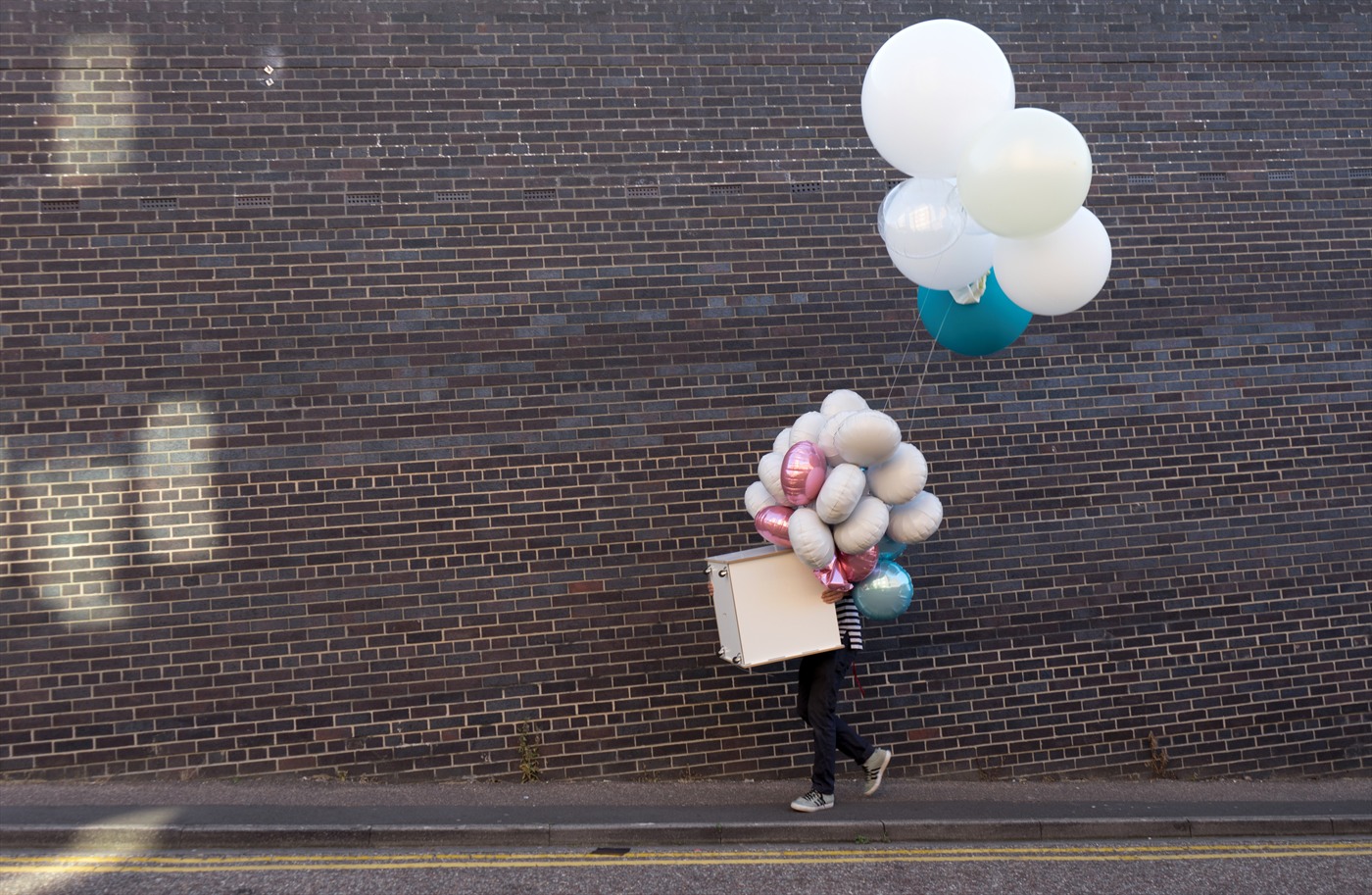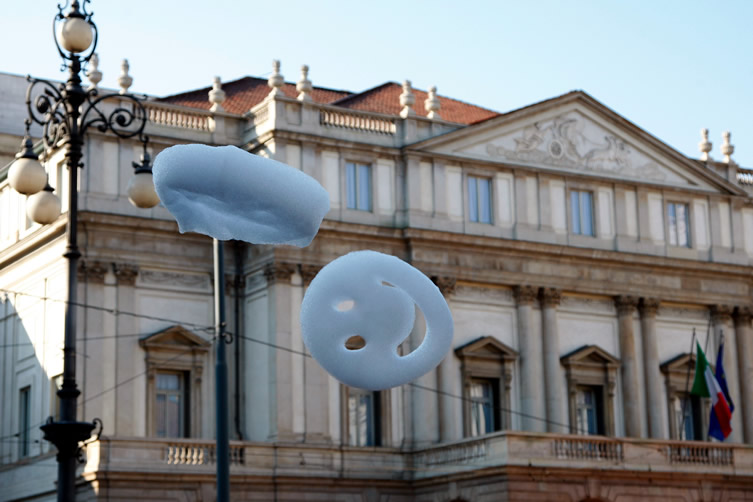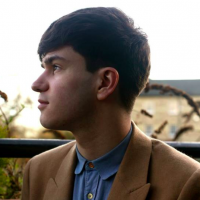Created by the British company Surrey NanoSystems, Vantablack absorbs 99.965% of all visible radiation. In February 2016, Kapoor swiftly secured exclusive rights to the material. This sparked much online outcry from members of the art community, and the emergence of the hashtag #SharetheBlack.
Semple, who is known for his pop art inspired canvases, decided to create his own publically available pigment, The World’s Pinkest Pink, as a riposte to Kapoor’s decision to legally exclude others from using Vantablack. Most recently, following a petty Instagram retort from Kapoor in December, Semple has produced his own answer to Vantablack — on offer to everyone except Kapoor himself, who is banned from purchasing the product.
H A P P E N I N G met with Semple, and we discussed the ongoing color war as well as its larger political implications.

Stuart Semple pictured with "Nimrod AK47". Courtesy the artist
Could you give us a runthrough of the long process that's gone into making your "blackest black" pigment, and explain what's special about it?
Sure. I think first it's really important to understand that it's not a pigment. There's a lot of misunderstanding about that. The other thing is it's not the blackest black. It's a bit complicated but essentially paints are made out of two parts, a base or vehicle and a colour — normally a pigment. The base is the vehicle that holds the pigment and this helps it stick to whatever surface you are painting. The issue we've had as artists with acrylic bases is how much pigment they can hold and how much light those bases reflect. So what I've done is re-develop the base part of paint, to enable it to take on the largest pigment load of any acrylic paint, and the base I've created is super-mattifying which means when it coats the pigment it makes it reflect much much less light. We've had really good black pigments in art for centuries, but the problem has been with the binder / vehicle / base. So BLACK V1.0 is a two part paint, consisting of a super-base which is a liquid and then a pot of micronized black pigment.

Anish Kapoor's response to Stuart Semple. Image via Instagram
What is special about it and what makes it a 'better' black is that it is affordable, non-toxic, can be exported worldwide, it's super matt, super flat, and the most pigmented acrylic in the world. It's also black cherry scented. In comparison to VantaBlack - vanta is extremely expensive, can only be made in tiny amounts, it's toxic, needs to be applied in a lab, if you touch it it breaks, and it heats up to 300 degrees. And most importantly Anish Kapoor has the exclusivity over it so only he can make art with it. BLACK v1.0 is an acrylic black for everyone. I have been making my own paints for about 15 years and I had a very good acrylic base that I was using. Over the last few months I've collaborated with colour chemists, architectural coatings manufacturers and friends in the cosmetics industries to create my super-base. It's still a beta version because I really want to know what others want it to be so as soon as I get all the feedback from artists around the world who are using it, I'm going to make a new version that will be based on that user study. It's still very much a work in progress.
Do you think Kapoor's monopolization of the material is symptomatic of wider problems of greed and a blinkered commercial focus among many high-profile artists?
It's more symptomatic of an old world vs new world. It's very much about proprietary protectionist approaches. The thing is we are in a new world thanks to social media, it's a two way discussion and good ideas spread. It's no longer about who’s got the money to monopolize. I don't think being commercially minded and being ethical are mutually exclusive either. There's some really successful people that do beautiful things to contribute and there are successful people who don't. It's all about the intention, are you doing what you're doing for the culture or for yourself. I don’t need to make and release materials, I could just use them for my paintings, I could put my money into buying toys to make me feel happy or I could get involved in moving things on. I just love seeing people making things. In a consumer culture, making things is the biggest rebellion you can take and to do that you need tools.
Have you received messages of support from other artists or people in the art community after speaking out against Kapoor's refusal to share his "Vantablack" pigment?
Yes so many and it's just mind blowing! I can’t tell you how much it means to me to receive all those messages, it really keeps me going. It's not easy doing this — I'm an artist so I don't really know how to navigate these things and there have been stressful, tough moments, but knowing people care encourages me to keeps me pushing it. It means there's a reason to do it.

Giant balloon cluster from Stuart Semple's SOMETHING AMAZING, 6am September 1, 2016. Courtesy the artist
Are you fan of Anish Kapoor's work irrespective of him securing exclusive rights to Vantablack?
Yes I am. I love a lot of it. I remember seeing the early pigment works when I was a student and I thought they were extremely good. I really like some of the bigger public pieces and I admire a lot of what he does in terms of human rights, and his support of refugees. I just find it really strange the way he acts in a commercial sense because it feels really opposed to what a lot of his work stands for. There are pieces of his work I don't love as much. I wouldn't say he's my favourite artist ever but I respect what he makes.
How are you incorporating your "glitteriest glitter", and the new pigments you have created, into your work?
I've been using my own materials for well over a decade so most of what I make is my paint or glitter. Those materials have evolved as my paintings have evolved and I've needed more out of them. Actually I'm doing some printmaking this week and I'll be using my diamond dust for that.
The past year saw two unexpected political outcomes: that of Britain's EU referendum and of the US presidential election. Will we see a shift in your work in the context of the social and political climate that has ensued from those events?
I think that's kind of inevitable, the work seems to reflect what's going on so those issues will no doubt be the background for a lot of what is to come. If there was ever a moment in recent history where making stuff made sense this is certainly one of them.
Can we expect more uplifting public art projects like Happyclouds and SOMETHING AMAZING in the near future?
Yes!!! I'm working on something really really big for Denver in 2018. I'm so excited about it. Happyclouds are spreading this year too, so there will be more cities and more countries - I can’t wait! But in terms of public art - Denver.

Stuart Semple, Happyclouds project, Milan, 2009. Photo via we-heart
Given that your work looks critically at the effect of mass culture and online media on the individual, what do you make of to so-called "post-truth" political era that many feel we are now living in?
That's a chunky question. Actually I think perhaps we've been living under a cloud of post-truth for a very long time. The overall ideologies and the culture in general has been manipulated for a very long time. Propaganda isn't a new concept but it's morphed into something increasingly chameleon-like, and with the speed and pace of social media and rolling news it's found a very ripe and furtive environment. It's very difficult because the genie is out of the bottle. It's terrifying to me, it's like 1984 and I'm trying to fathom out what part art can take in regaining some kind of autonomy in that space. I have no answers but I'm increasingly fearful.









